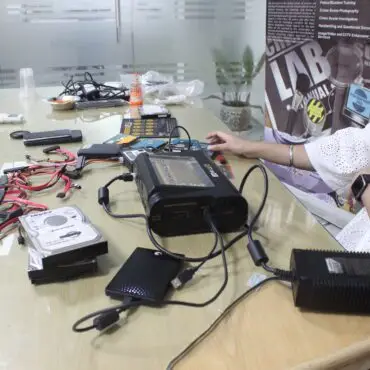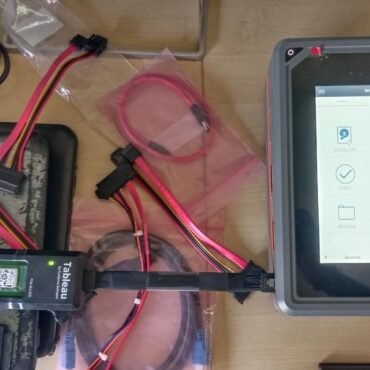Recovering Deleted Photos and Videos Using Forensic Tools: FTK Imager, TX1, EnCase, and Autopsy
In today’s digital age, photos and videos are among the most valuable forms of evidence. From personal memories to crucial pieces of legal proof, recovering deleted multimedia files has become a vital task in digital forensics. However, recovering deleted data is not as simple as hitting an “undo” button. It requires specialized forensic tools that can read storage media at a deeper level, bypass system-level deletion, and extract hidden or fragmented files while maintaining evidentiary integrity.
This blog explores how leading forensic tools—FTK Imager, Tableau Forensic Imager TX1, EnCase, and Autopsy—help recover deleted photos and videos. We’ll also compare them in terms of speed, reliability, and effectiveness, and highlight which tool is best suited for recovery.
How File Deletion Works (In Simple Terms)
When you delete a photo or video, it is not instantly erased from the device. Instead, the file system only marks the storage space as “available.” Until new data overwrites it, the deleted file can still be recovered. Forensic tools leverage this principle by scanning unallocated space, file system metadata, and carving raw data blocks to reconstruct images and videos.
Forensic Tools for Photo and Video Recovery
1. FTK Imager
-
How it works: FTK Imager is primarily an imaging and preview tool. It creates forensic images (exact replicas of drives) and allows investigators to recover deleted files from allocated and unallocated spaces. It supports file carving for photos and videos in formats like JPEG, PNG, MP4, and AVI.
-
Speed: Very fast for creating forensic images and retrieving intact deleted files.
-
Reliability: High for standard file recovery but limited for deeply fragmented video recovery.
-
Best use: Quick recovery and preview of recently deleted multimedia files.
2. Tableau Forensic Imager (TX1)
-
How it works: TX1 is a hardware-based forensic imager. It captures forensic copies of hard drives, SSDs, USBs, and memory cards at very high speeds. While TX1 itself does not perform advanced carving, the forensic image it creates can be analyzed in software tools like EnCase or Autopsy for photo and video recovery.
-
Speed: Extremely fast (up to 540 MB/s imaging speed). Ideal for large-capacity drives containing terabytes of video data.
-
Reliability: Excellent for ensuring write-blocked, tamper-proof acquisition. However, recovery depends on pairing TX1 images with analysis tools.
-
Best use: Large-scale imaging of drives before recovery analysis.
3. EnCase Forensic
-
How it works: EnCase is a comprehensive forensic suite. It allows examiners to recover deleted photos and videos using both metadata analysis and file carving techniques. It can handle fragmented multimedia recovery, making it powerful for reconstructing videos.
-
Speed: Moderate to fast, depending on dataset size. Slightly slower than FTK Imager for basic recovery but much better for complex video reconstruction.
-
Reliability: Very high, widely accepted in courts due to its strong chain-of-custody and reporting features.
-
Best use: Legal investigations where evidentiary reliability is critical and fragmented video recovery is needed.
4. Autopsy (with Sleuth Kit)
-
How it works: Autopsy is an open-source forensic platform. It supports recovery of deleted photos and videos using data carving and file system analysis. It works well with common multimedia file types and provides timeline analysis to correlate recovery with user activity.
-
Speed: Slower compared to FTK and EnCase when dealing with very large video datasets.
-
Reliability: High, but reports may require additional validation compared to EnCase.
-
Best use: Cost-effective investigations, academic projects, or when budget constraints prevent use of commercial tools.
Comparison: Which Tool is Best for Multimedia Recovery?
| Tool |
Speed ⚡ |
Reliability ✅ |
Multimedia Recovery Strength 🎥 |
Best For |
| FTK Imager |
High |
High |
Good for quick photo/video recovery |
Fast imaging + simple recovery |
| TX1 |
Very High |
Very High |
Requires other tools for recovery |
Large-scale drive imaging |
| EnCase |
Moderate |
Very High |
Excellent (handles fragmented videos) |
Legal & complex cases |
| Autopsy |
Moderate |
High |
Good, especially for photos |
Budget-friendly & academic use |
Conclusion: Choosing the Right Tool
-
For speed and quick recovery → FTK Imager is the best choice.
-
For large drives and reliable imaging → TX1 is unmatched.
-
For court-admissible, complex recovery (especially videos) → EnCase is the gold standard.
-
For open-source, budget-friendly investigations → Autopsy provides a solid alternative.
In practice, forensic investigators often use these tools together: TX1 for imaging, FTK for preview, EnCase for in-depth recovery, and Autopsy for verification. The combination ensures maximum recovery of deleted photos and videos while maintaining evidentiary integrity.




Post comments (0)